SSL encrypted & Cloudflare protected
With the newly introduced method, it is possible to calculate the external thermal resistance of all buried objects using finite element calculation.
The extensive python FEM module PyGimli is used for all our applications using the finite element method, including the calculation of the temperature distribution. Thanks to the contributors of PyGimli.
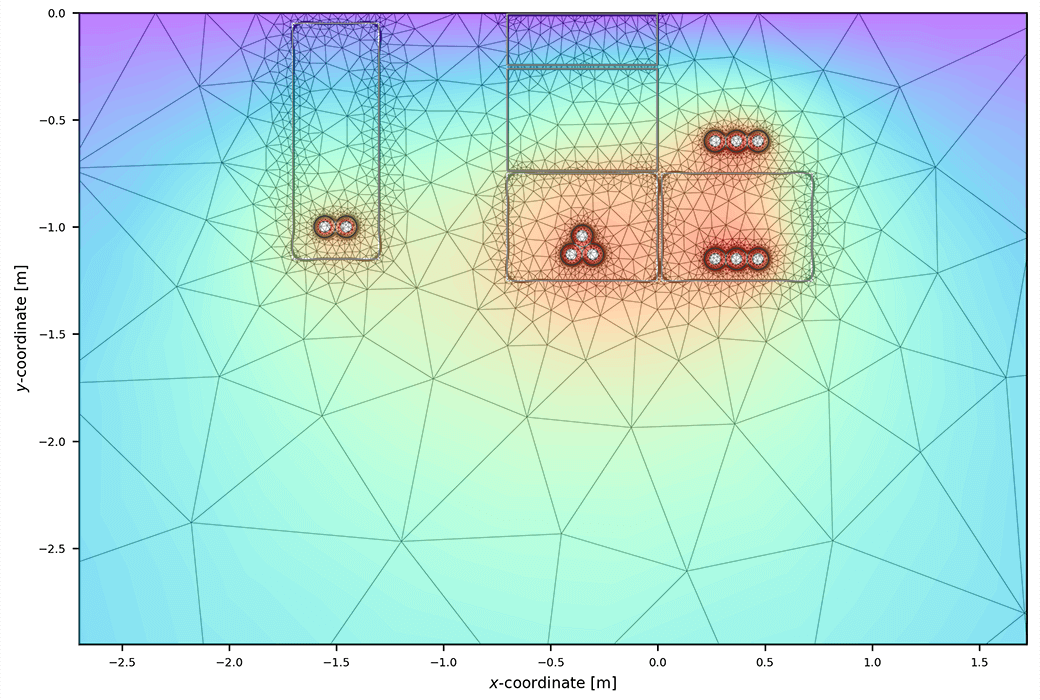
You can create laying arrangements with up to 20 systems made out of different cable systems, all having different frequencies, loading, load factors, in pipes, directly buried, etc.
Add heat sources, duct banks, backfills, consider drying-out, fill ducts with bentonite, etc.
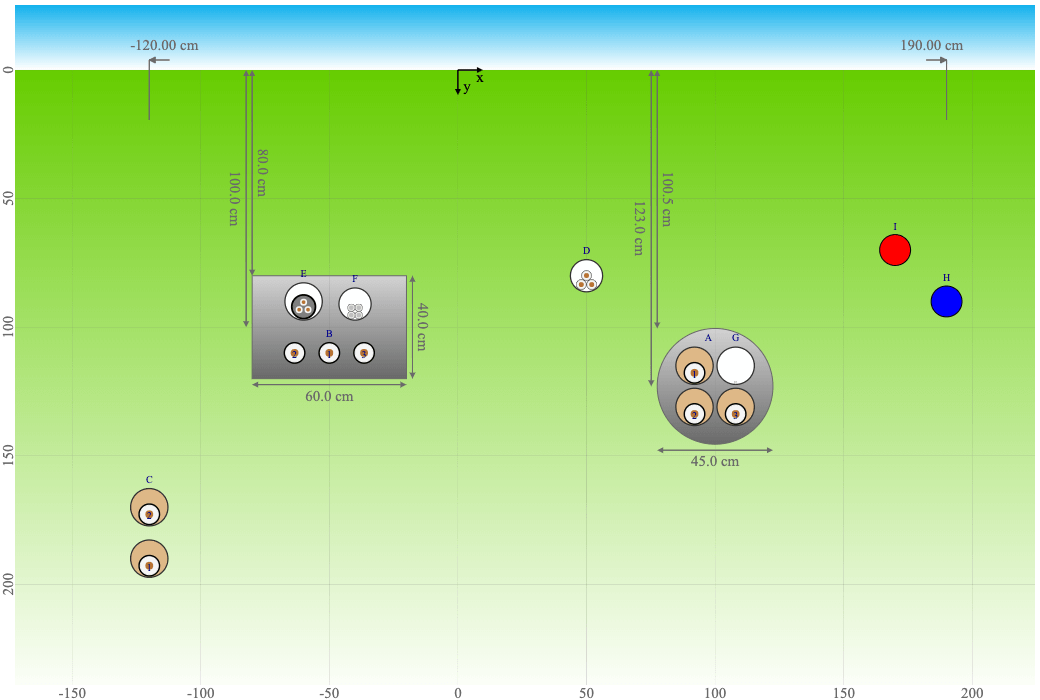
This analytic method allows to model cables and cables in ducts to be places within an air-filled buried pipe. Such an installation is found in horizontal and directional drillings and small tunnels. The calculation is using the principles of buried cables including air-filled ducts and cables in air-filled troughs where the temperature of the air-space is calculated iteratively considering the losses of all containing systems.
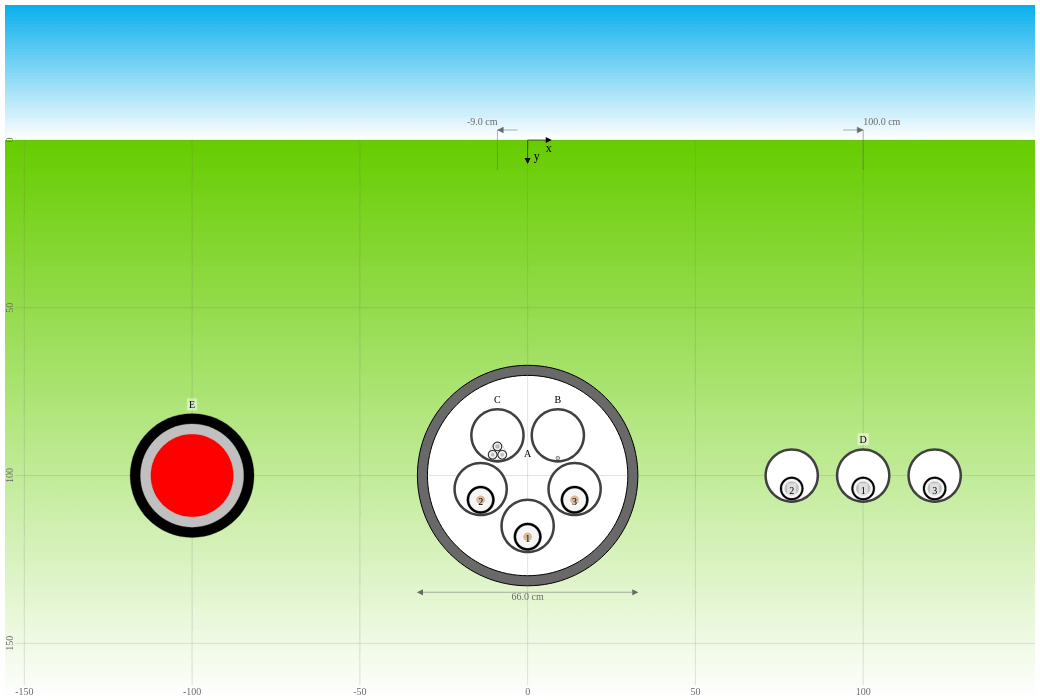
With the multi-layer backfill method, it is possible to simulate the filling of a rectangular trench where the cables are buried with two superimposed horizontal layers of different materials.
The multilayer backfill can be used in two ways, either an analytic method using parameters derived from extensive FEM calculations or using our finite element method to calculate the external thermal resistance. The latter case allows to add additional backfill areas.
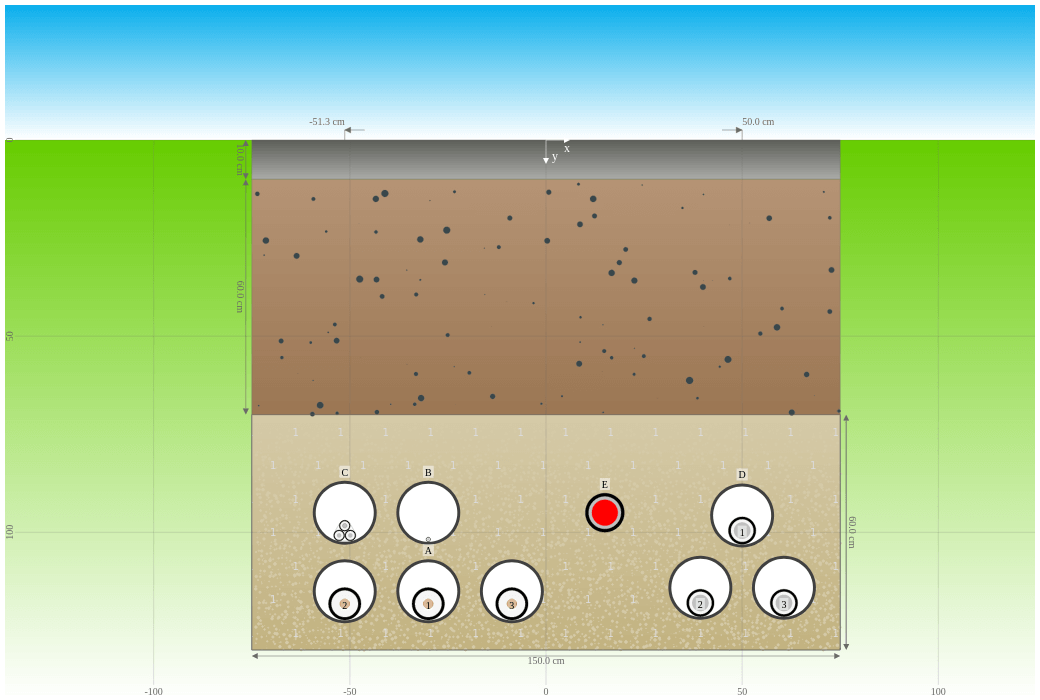
You can place up to 12 cables inside the same duct for systems being buried or in air.
Their position inside the duct is automatically set depending on inner duct diameter.
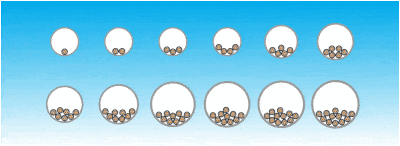
Calculate the temperature distribution in the soil and show the increase in temperature due to power cables or heat sources/sinks. It is available for modules buried, subsea, tunnel and trough.
You may choose superposition principle or finite element method.
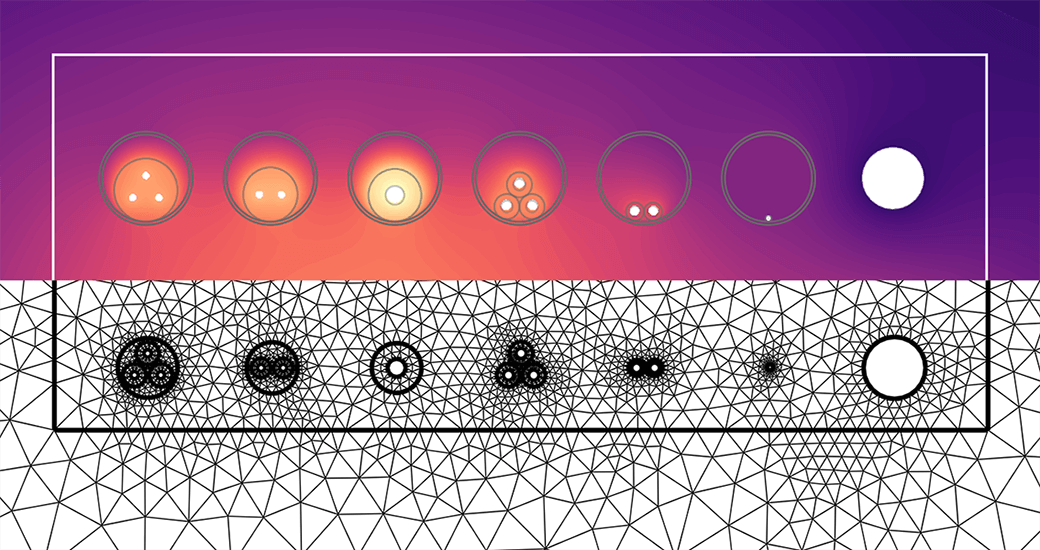
You can calculate the magnetic field of multi-frequency systems, set the load flow or a phase-shift for each system. The output is in brilliant 2D isolines and in 1D lines above ground.
Magnetic field calculation is possible for all modules: in air, buried, subsea, tunnel, trough, and riser. Several settings can be made such as plot width, isolines and colormap.
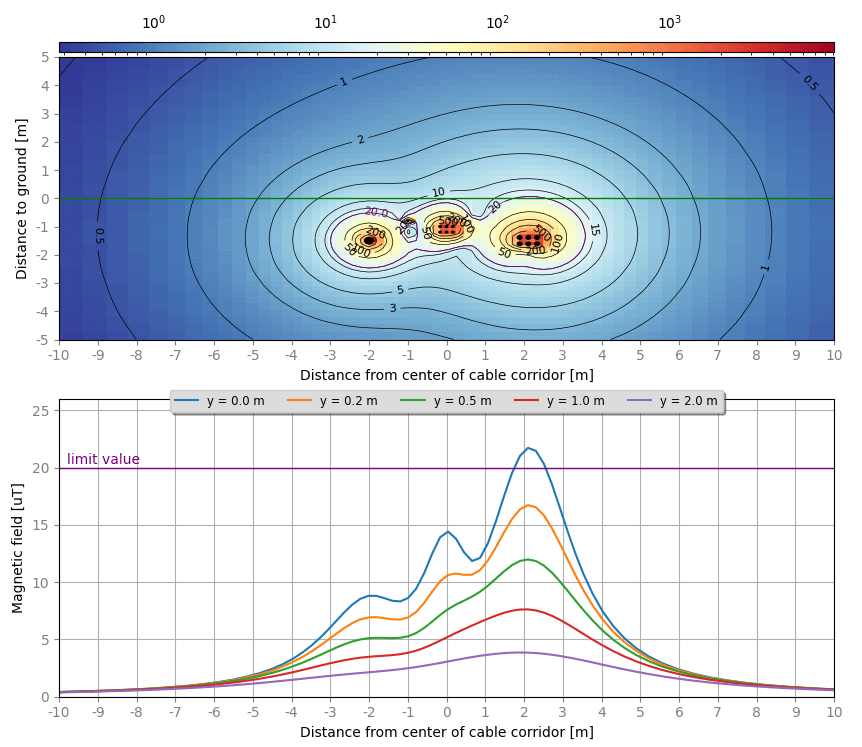
You can calculate the crossing at any angle of one or multiple cable systems with one or multiple other cable systems or heat sources.
Cableizer was the first software in the market able to calculate multiple crossings using an intelligent iterative procedure. The method is our own development and was presented at Jicable'19 in Paris.
Download the full paper at researchgate.com
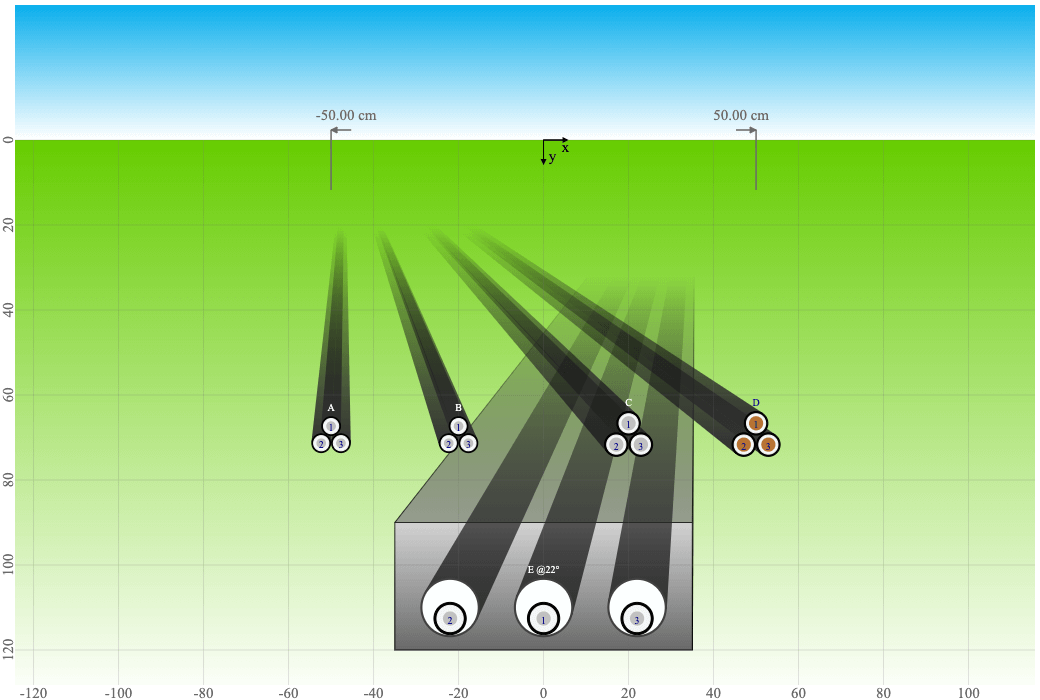
Cableizer is the only software in the market able to calculate the current rating for up to 6 different, unequally loaded cable systems in ventilated tunnels. The method is our own development and was presented at Jicable'19 in Paris.See
Other methods you can choose from are the Heinhold and IEC 60287-2-3 method.
Download the full paper at researchgate.com
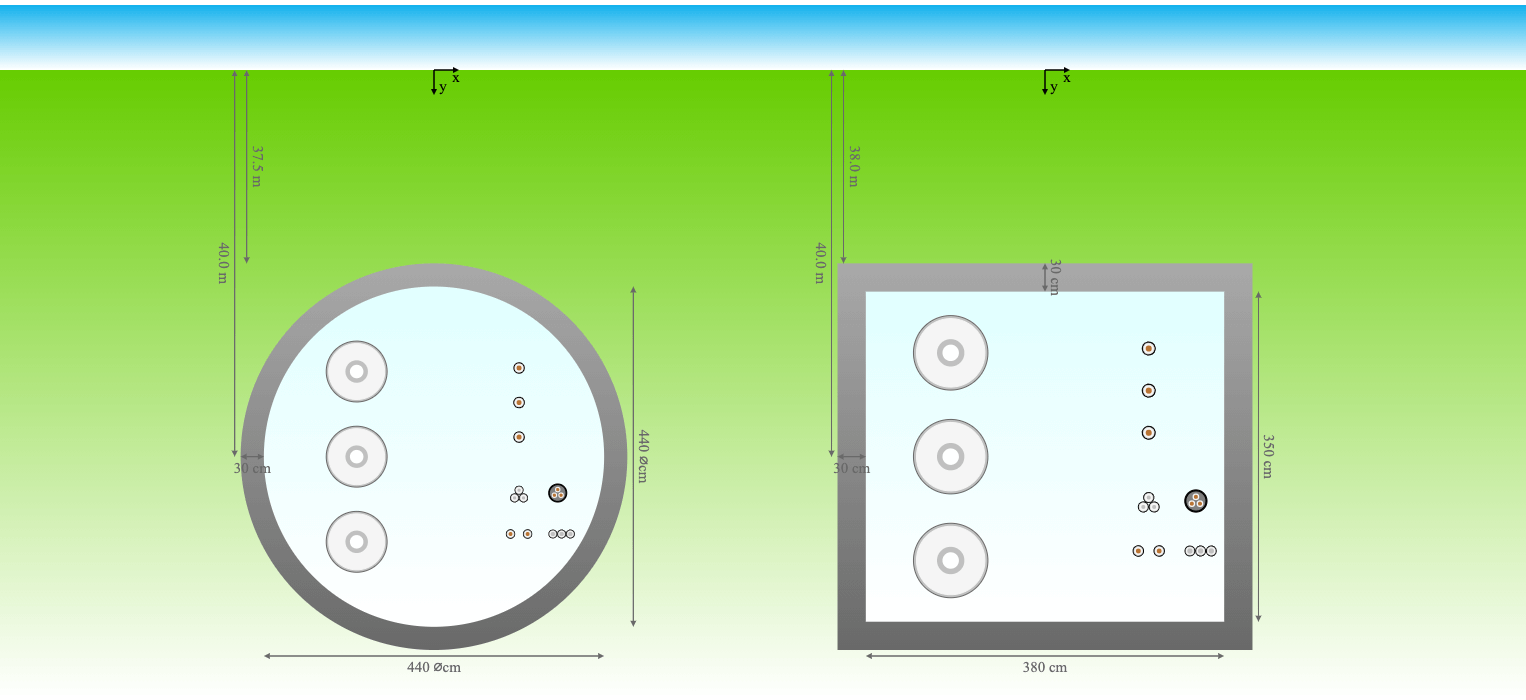
You can calculate the cable current rating for multiple different cable systems or heat sources in empty or filled troughs.
Choose from five methods: IEC 60287, IEE Wiring Regulation (BS 7671), Slaninka I with all equal resistivities, Slaninka II with different resistivities, or Anders extending Slaninka II for empty (air-filled) troughs.
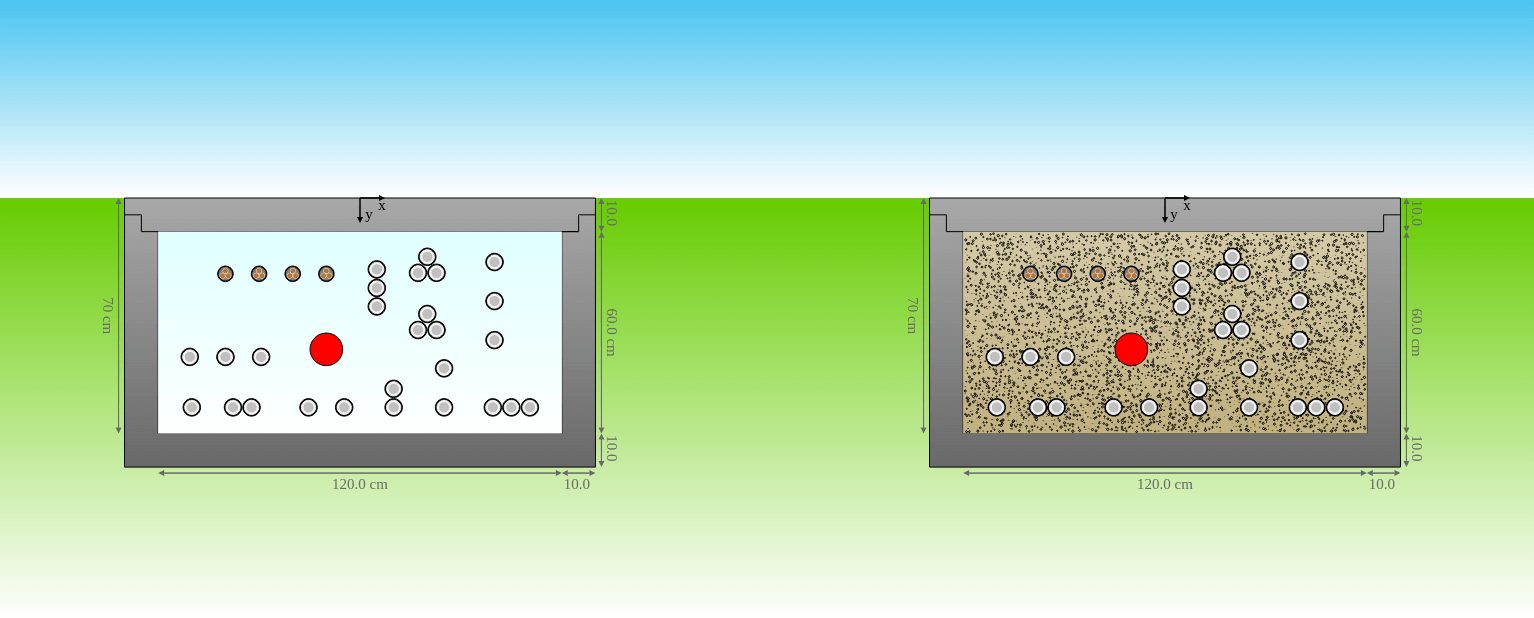
You can calculate the cable current rating for a subsea cable including parallel heat sources. The subsea cable can be fully buried, partially buried and completely in water. calculation method: IEC, Carslaw & Jaeger, Morud & Simonsen, Ovuworie, OTC 23033
The heat increase at specific depth can be calculated to consider the 2K criterion.
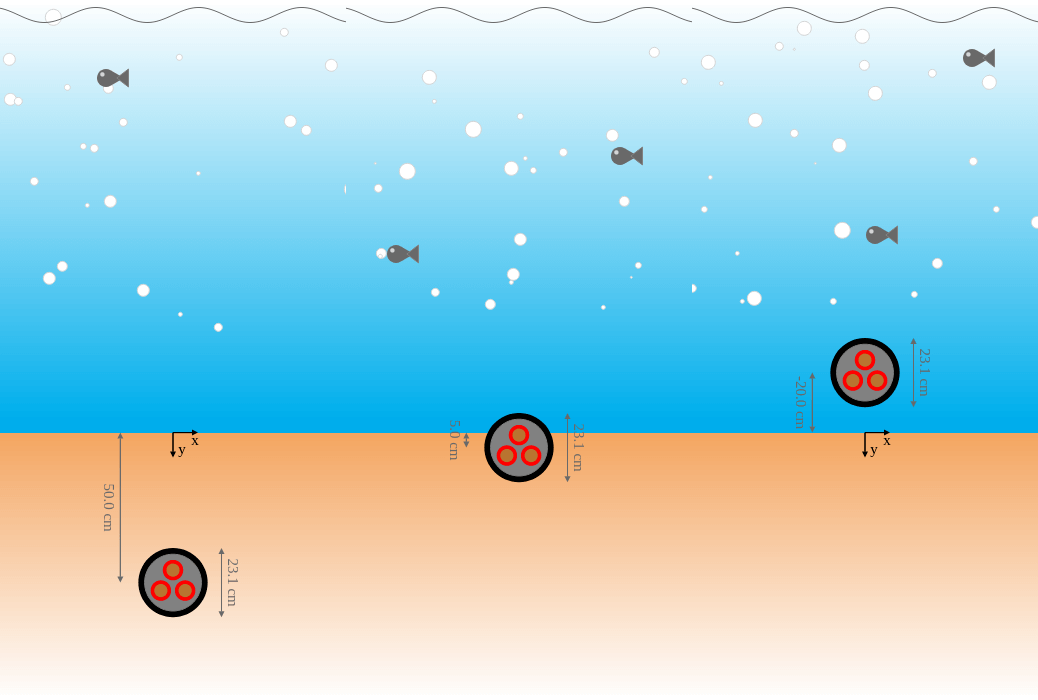
You can calculate the cable current rating for cables installed in J-tubes with four different methods:
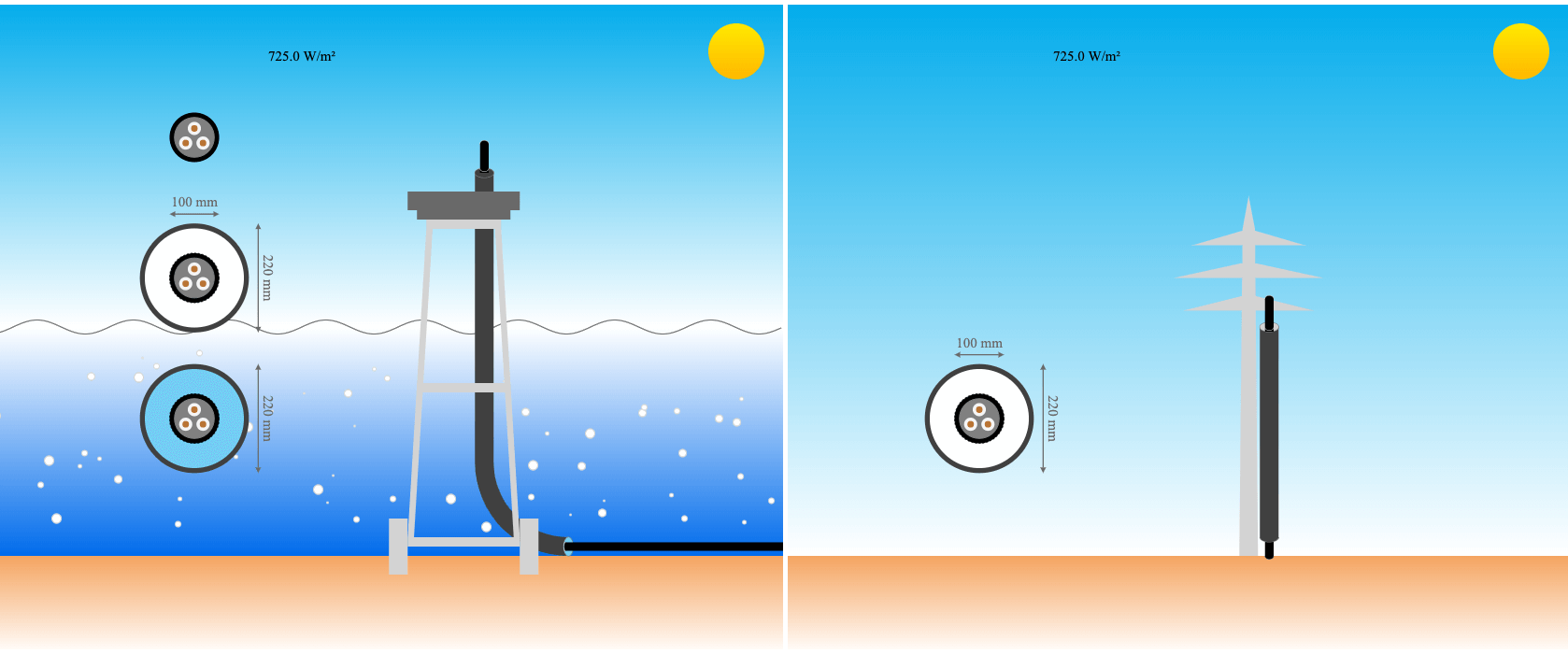
All options offered by IEC can be used, plus cables in pipes and grouped cables with solar radiation. You can set the spacing to smaller values than given in the IEC and use groups of two touching cables currently not covered by IEC standard.
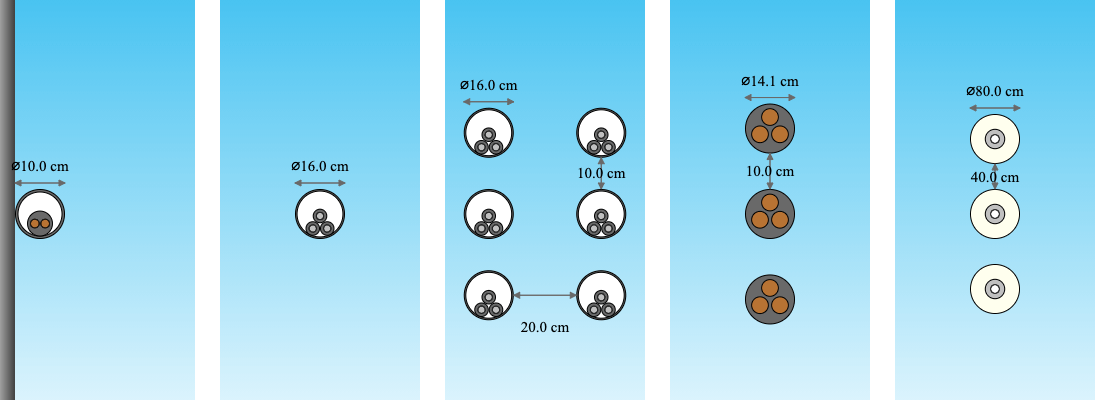
Model the cable route with sections, slopes, bends and cable pushers with 2D/3D preview and calculate the pulling tension.
Cableizer can calculate the pulling forces of cables being pulled over a route longer than the cables.

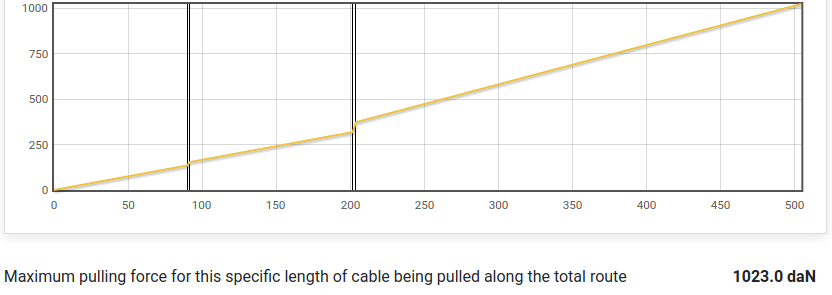
Cableizer is suitable to model power cables of all voltage range, be it 230 V or 500 kV; AC or DC cables; one-, two- or three-core cables; with all kind of materials for conductor, insulation, screen/sheath, armour and jacket.
You can define and store as many individual cables and project as you like. We also offer you a library with more than 100 sample cables.
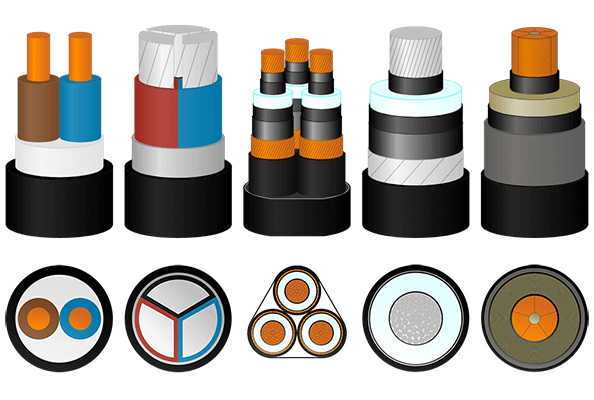
Cableizer uses sophisticated code to visualize the cable in a 2D and 3D model and to update instantly after changes in the editor.
The dimensions of both previews are to scale for each layer relative to the others.
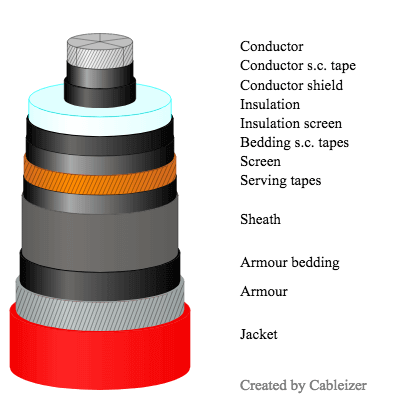

The content of the cable datasheets can be defined in a flexible way. One can define which parameters to include or not.
For this, the software calculates many additional parameters such as mass of all cable layers, minimal bending radius, gross heat of combustion value, heat energy content, embodied energy, embodied carbon, cost of metals in the cable
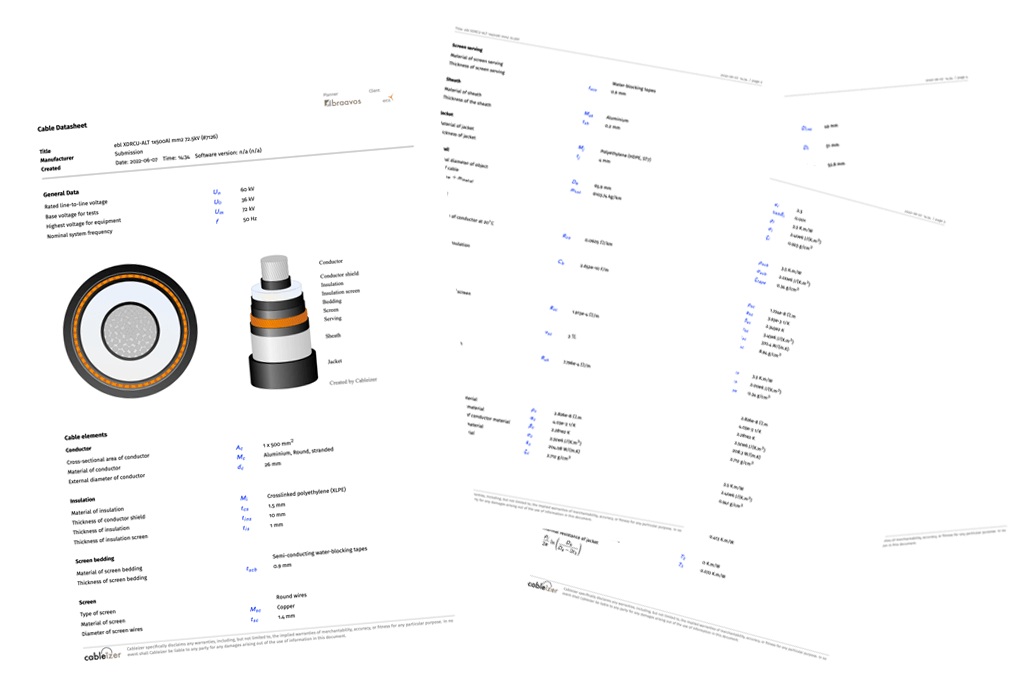
You can calculate the cable current rating for a subsea cable including parallel heat sources. The subsea cable can be fully buried, partially buried and completely in water. calculation method: IEC, Carslaw & Jaeger, Morud & Simonsen, Ovuworie, OTC 23033
The heat increase at specific depth can be calculated to consider the 2K criterion.
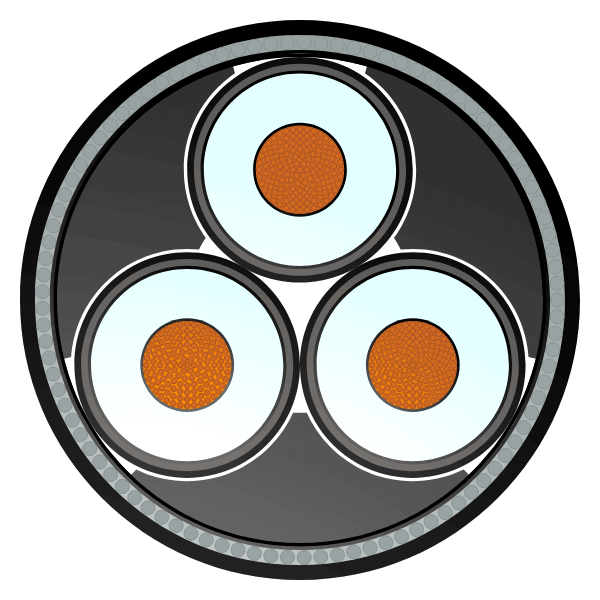
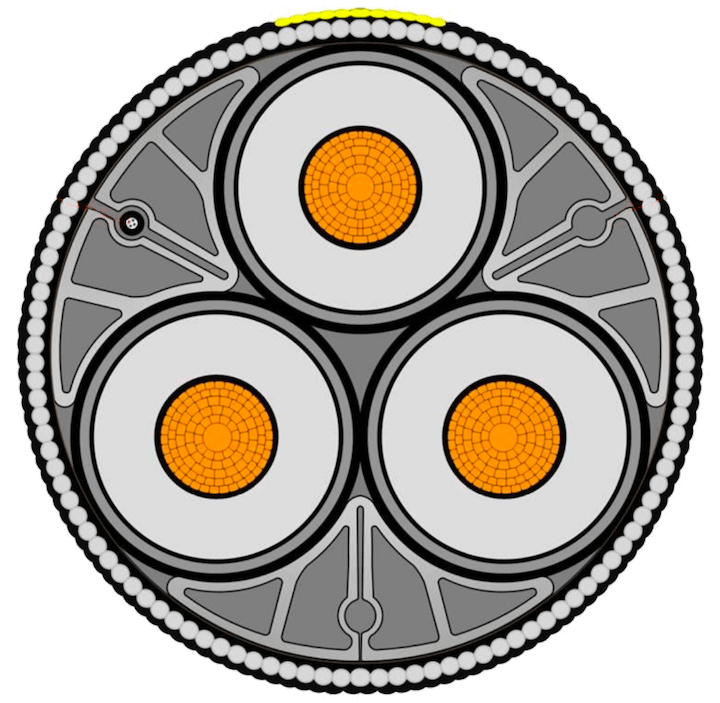
Pressurized air cable (PAC, Hivoduct) or gas insulated line (GIL, see entso-e). PAC/GIL can have hollow or solid conductors of different materials, a gas compartment with pressurized dry air, nitrogen, SF6, CO2, or gas mixtures and a protective cover.
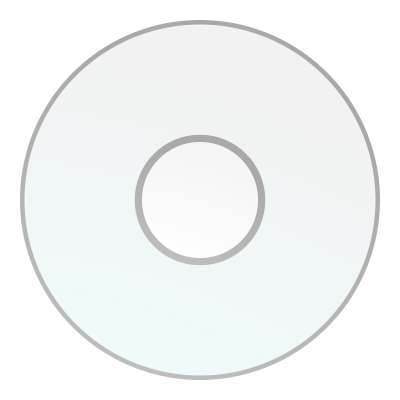

The short-circuit rating of any current carrying component of a cable - conductor, screen, sheath and armour - is calculated according to the standard IEC 949, taking into account non-adiabatic heating effects.
Initial temperature is taken from the ampacity calculation results directly to ensure worst-case scenario.
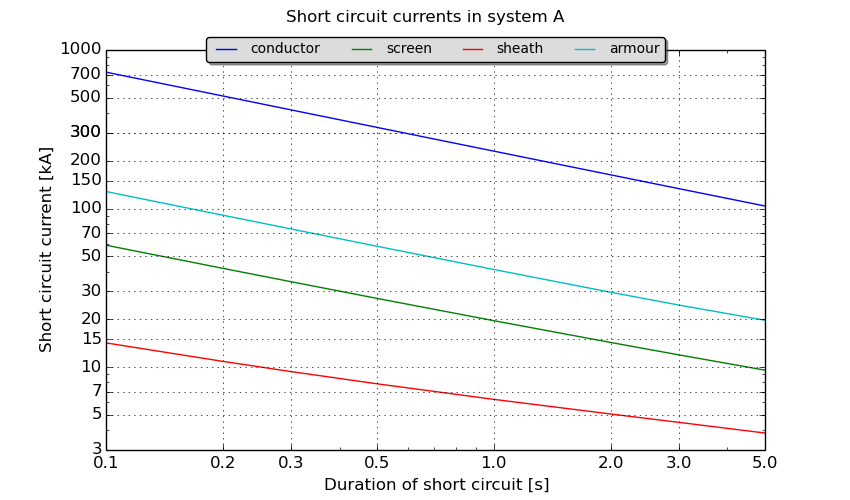
For the calculation of voltage drop along a cable, one may enter a specific load (kW), the power factor (cosφ), and the length of the cable line. The power factor is the ratio of active power to apparent power and when the waveforms are purely sinusoidal the phase angle φ between the current and voltage.
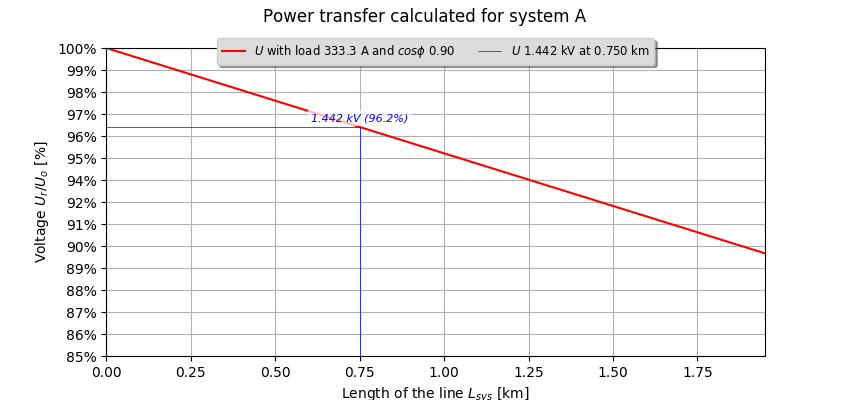
A figure can be drawn where the active power at the load point versus the length of the line is presented (assuming cosφ=1).
With increasing length, the capacitive charging current will reach the value of the maximum allowable current of the cable.
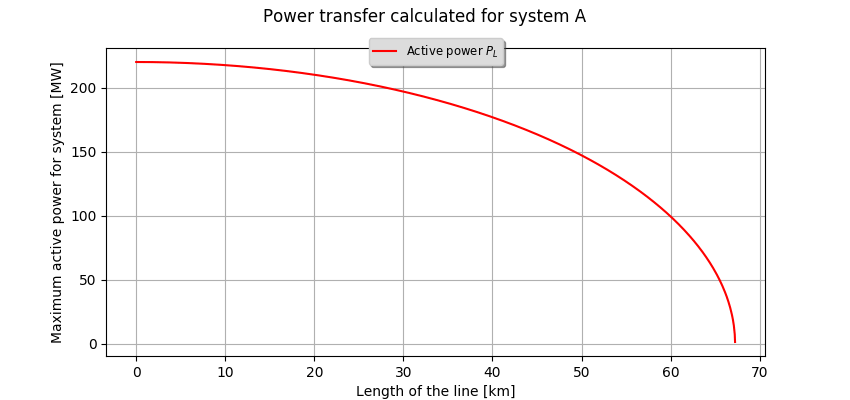
The solar radiation calculator is a tool that estimates the intensity of solar radiation for a given day and a given place depending on its location and altitude.
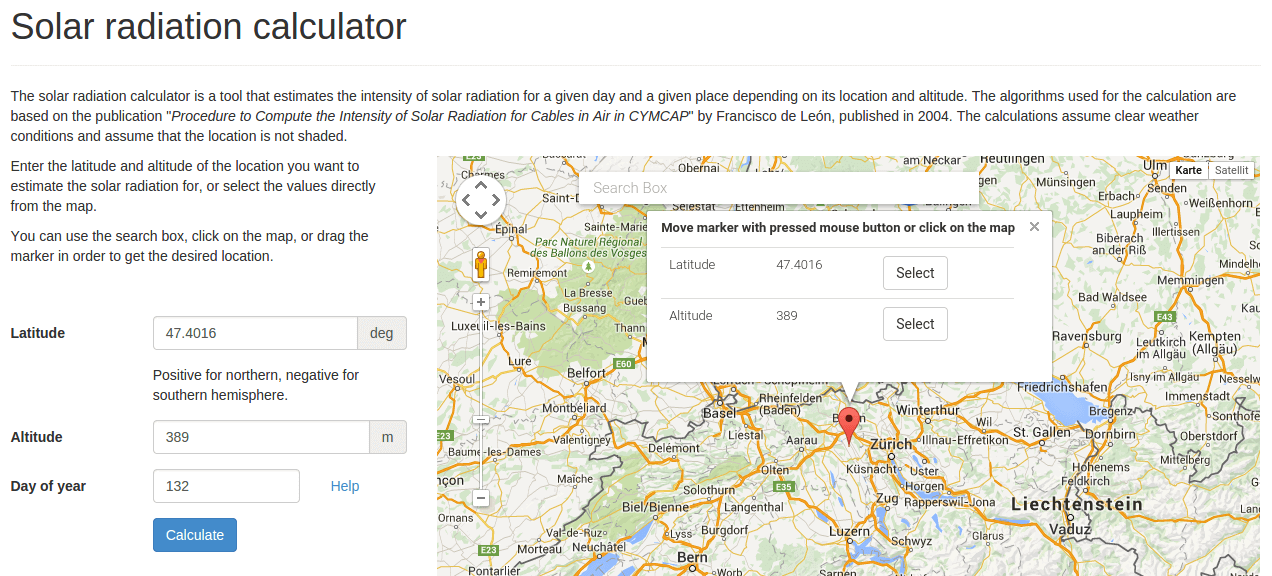
The soil temperature calculator helps you to estimate the ambient soil temperature at a particular lying depth and day of year. In climates with distinct seasons one observes temperature changes in the uppermost soil meters. The upper soil layers are heated in the summer, while the deeper layers are still cold.
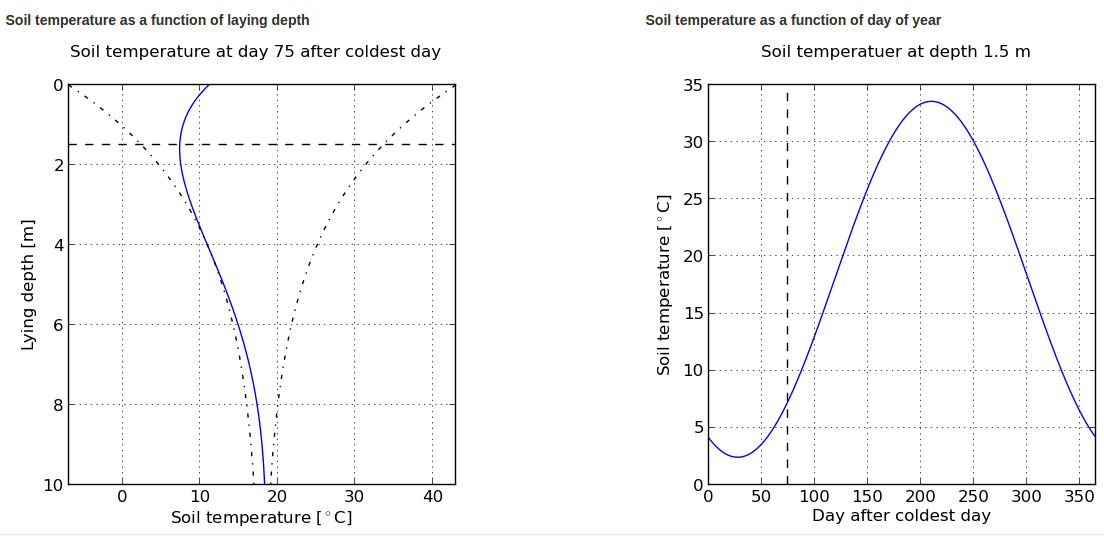
The load factor calculator is a tool that calculates the squared ratio between the average power and the maximum demand in a period of time.
$$LF=\frac{D_{average}}{D_{max}}=\frac{I}{D_{max}} \frac{ \sum \limits_{t=0}^T D(t)dt}{T}$$
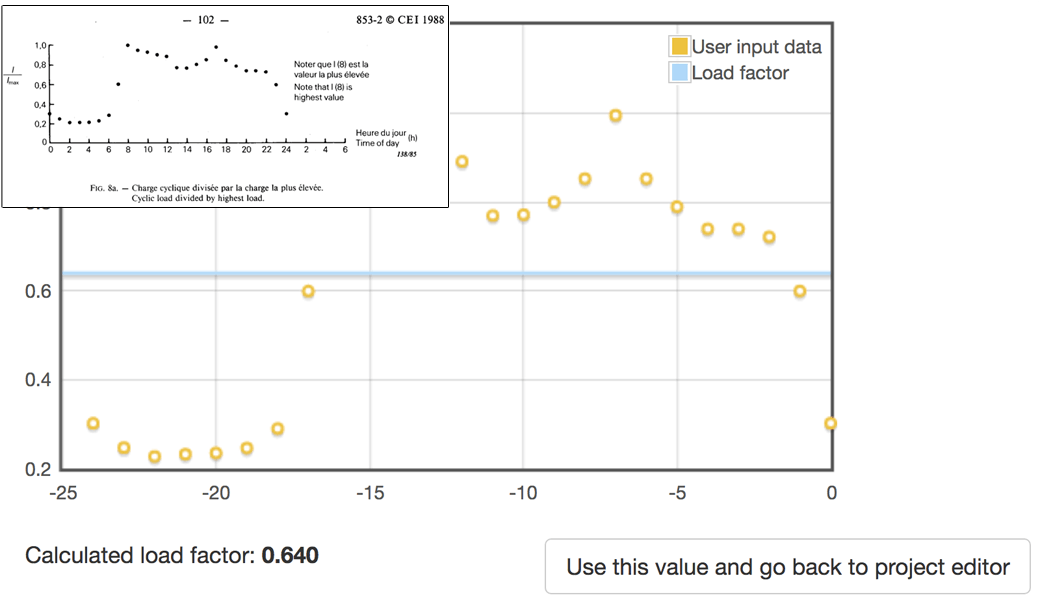
The loss factor calculator is a tool that calculates the ratio between the average power losses and the losses during peak load in a period of the time. In other words, the loss factor is simply the load factor of the losses.
$$\mu=\frac{L_{average}}{L_{max}}=\frac{I}{L_{max}} \frac{\int\limits_{t=0}^T L(t)dt}{T}$$
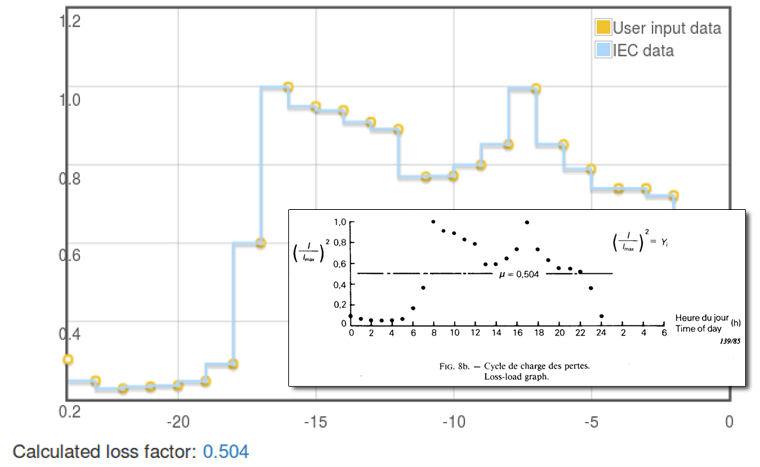
We provide a cyclic rating method acc. IEC 60853 considering the corrections made by CIGRE WG B1.72.
Using the CIGRE methodology allows to includes a plot of temperature variation over the load cycle period period. We are using a combination of methods by IEC/CIGRE and Dorison which allows calculation of mutual heating between all systems even for a mix of all load methods, including steady-state, cyclic with load/loss factor, and cyclic rating based on IEC/CIGRE.
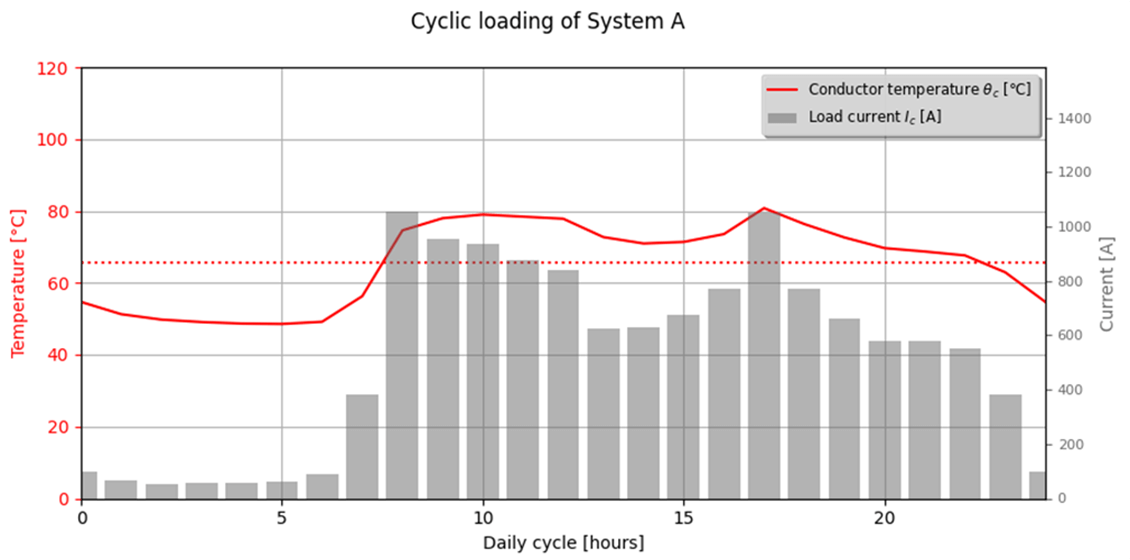
We provide an impressive emergency rating calculation acc. IEC 60853 and optionally considering CIGRE WG B1.72.
The output in the report includes all parameters for a specific user-defined emergency period. In addition, a plot is provided which shows the emergency rating current for a wide time range.
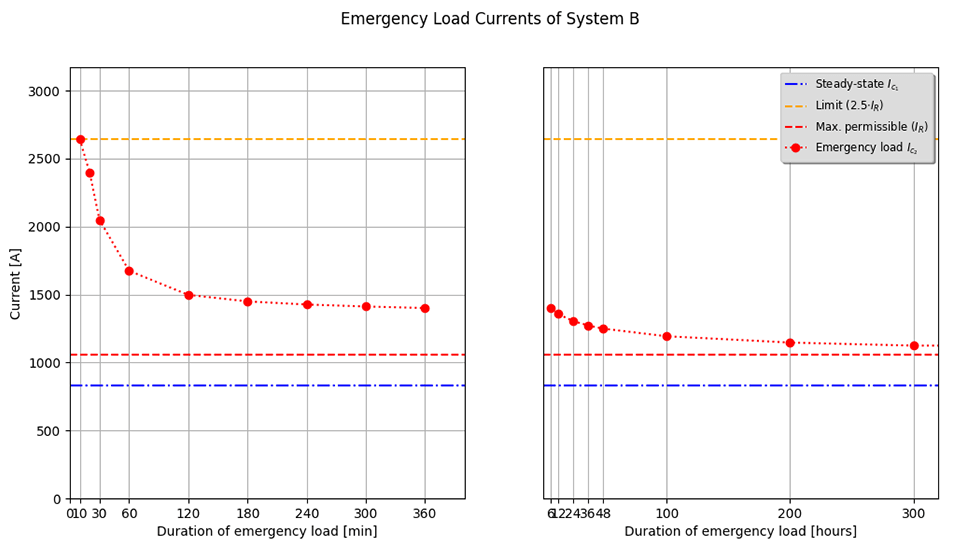
You can calculate transient step current calculations for one or several steps.
Duration of one step can be 10 minutes (lower limit of IEC 60853), hours or even days. The preload is calculated using steady-state method according to IEC 60287 with the temperatures at $t = 0$ being calculated using the same transient method over 10 days prior.
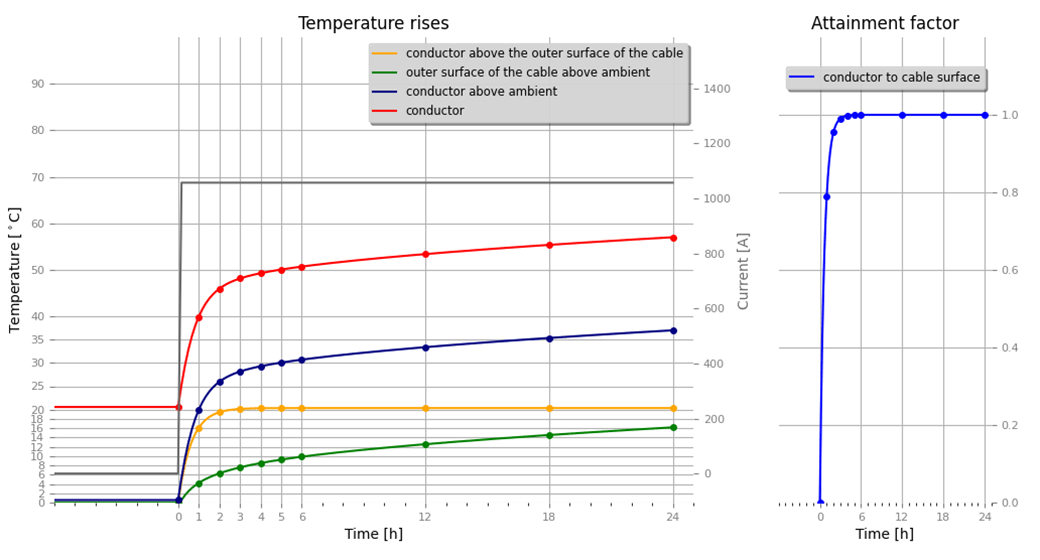
Equations can be included in the calculation reports and the cable datasheets. Where multiple cases with different formulas exist for a certain parameter, the software always takes the exact formula which was used for the specific system and cable.
We don't use pictures, we actually write the correct and complete formula.
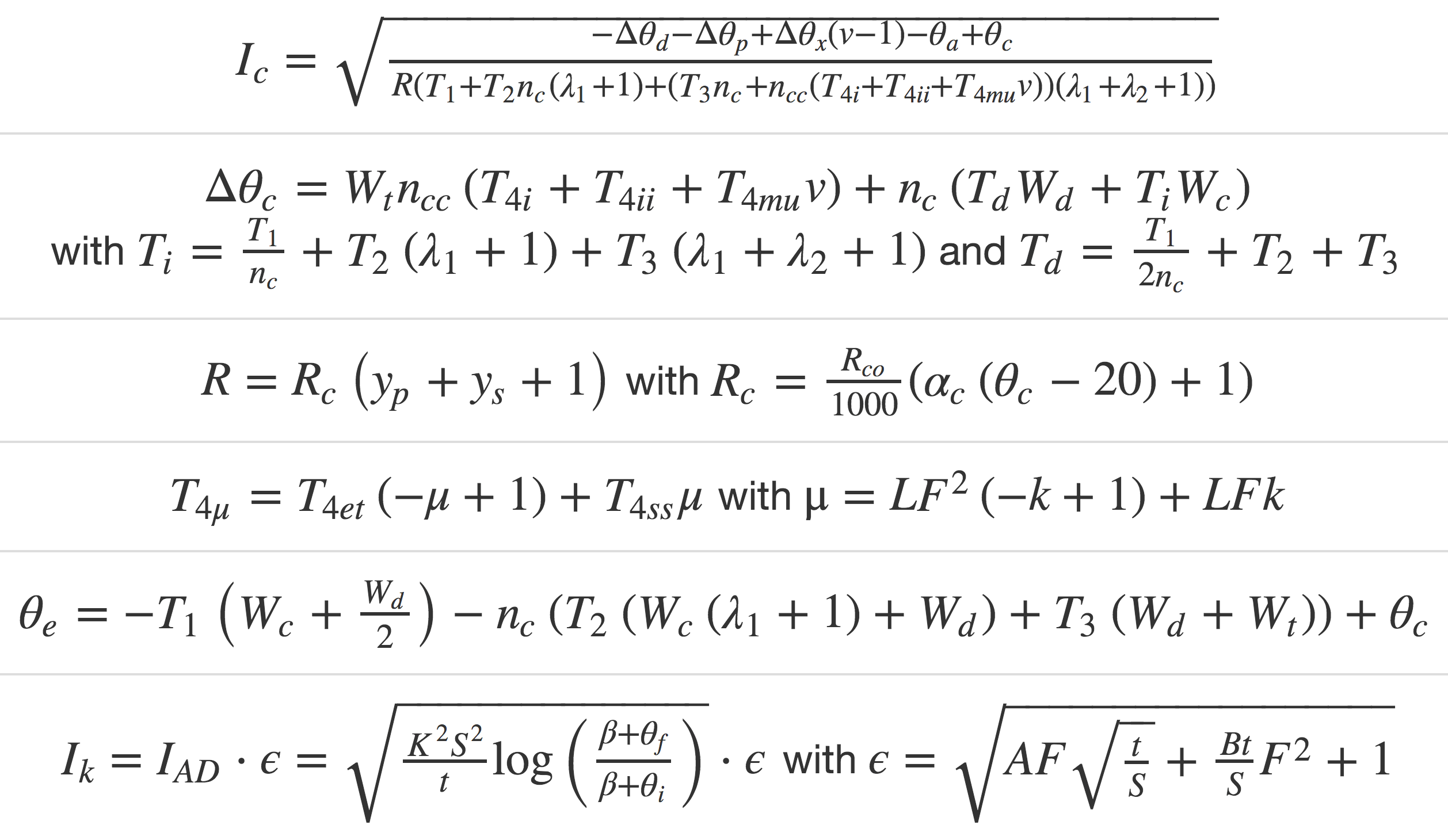
The simulation results are being displayed online and you are free to download them as high-end PDF. The results include all input parameters necessary to set up the study and all the main output data.
Missing data on the report? All parameters and results used by the database can be printed! Let us know!
Do you have a specific analysis or application in mind? Let us know!